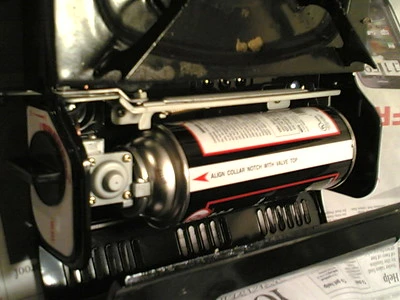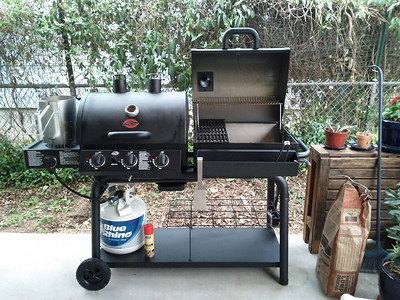
The pressure inside a butane gas canister can vary based on a number of factors such as temperature, canister design, and the specific requirements of the application. However, when you say “the standard supply pressure is 28 mbar,” that is typically the regulated pressure at which the gas exits the canister when connected to an appropriate regulator.
In the canister itself, the butane is usually in a liquid form, and its pressure can be substantially higher than the 28 mbar supply pressure mentioned above. The pressure can range from tens to hundreds of psi (pounds per square inch) depending on the temperature. For example, at room temperature (about 25°C or 77°F), the vapor pressure of butane is around 2 to 2.5 atmospheres or approximately 30 to 36 psi.
In general, it is crucial to use butane canisters only in accordance with the manufacturer’s specifications, especially because the pressure inside the canister can increase dramatically if exposed to high temperatures, posing a safety risk.
It is also important to understand that the 28 mbar is a regulated pressure at which the gas is delivered to appliances; it is not the internal pressure of the canister. Always refer to safety guidelines and specifications when using or storing gas canisters.
Read also: Should You Shake Butane? (Should You Do This?)
Internal Canister Pressure
Understanding the internal pressure within a butane canister is crucial for safe operation and efficient usage. Unlike the standard supply pressure, which is regulated to a specific value like 28 mbar, the internal canister pressure can be much higher and can vary under different conditions.
Butane in Liquid Form
Inside the canister, butane is usually stored in liquid form. This liquid butane undergoes vaporization to produce gaseous butane that can be supplied to appliances. The pressure inside the canister is essentially the vapor pressure of liquid butane at the existing temperature. The vapor pressure is the pressure exerted by the gas phase of a liquid in equilibrium with its liquid phase.
Typical Internal Pressure at Room Temperature
At room temperature (approximately 25°C or 77°F), the vapor pressure of butane ranges from around 30 to 36 psi (approximately 206 to 248 kPa). This is significantly higher than the standard supply pressure of 28 mbar, which equates to around 0.4 psi. It is important to note that these figures can vary somewhat depending on purity and other conditions, but they offer a good general guide.
Comparison with Standard Supply Pressure
It’s essential to distinguish between this internal pressure and the standard supply pressure of 28 mbar (or 11″ water gauge). The internal pressure is the pressure inside the canister before any regulation occurs. When connected to a gas regulator, the pressure is reduced to the standard supply pressure, which is safe for appliances and tools designed to operate at that level.
The difference between the internal pressure and the standard supply pressure underscores the importance of using a regulator to decrease the pressure to manageable and safe levels. Without proper regulation, the high internal pressure could be dangerous and could damage appliances or tools, not to mention posing significant safety risks such as gas leaks or explosions.
Understanding the internal pressure of a butane canister is not only key to safe usage but also essential for troubleshooting and optimal operation of the appliances connected to it. Always refer to the manufacturer’s guidelines for the most accurate and specific information.
Read also: Can You Refill a Butane Lighter Before Its Empty?
Factors Affecting Canister Pressure
Understanding the factors that affect the pressure inside a butane gas canister is crucial for both safety and effective usage. Three primary factors to consider are temperature, altitude, and canister design.
Temperature
The internal pressure of a butane canister is highly sensitive to temperature changes. Butane, like many gases, follows the Ideal Gas Law under many conditions, which can be expressed as PV=nRT, where P is pressure, V is volume, n is the number of moles of gas, R is the gas constant, and T is temperature. When butane is stored in a sealed canister, the volume V and the amount n are constant, meaning that pressure P is directly proportional to the temperature T. This means that as the temperature increases, the vapor pressure of the liquid butane also increases, leading to a higher internal canister pressure. For example, a canister left in a hot car on a sunny day could experience a significant increase in internal pressure, posing a safety risk.
Conversely, a decrease in temperature will lower the internal pressure, which may affect the performance of devices that rely on a specific supply pressure. Extremely low temperatures could even render the canister unable to deliver butane effectively.
Altitude
Altitude can also affect the internal pressure of a butane canister, but this effect is generally minor compared to temperature. At higher altitudes, the atmospheric pressure is lower, which means that the differential pressure (the difference between the internal pressure of the canister and the external atmospheric pressure) will be greater. However, the absolute internal pressure of the butane should remain nearly the same unless the temperature also changes. In practice, this means that a butane canister may empty more quickly at higher altitudes but is not significantly more likely to rupture or fail.
Canister Design
Different canister designs might be rated for different internal pressures. Manufacturers often build canisters with safety margins to account for increases in pressure due to temperature changes. Some high-performance canisters might be designed to withstand higher pressures and may be constructed with thicker walls or specialized materials. It’s crucial to use a canister that meets or exceeds the specifications for your particular application.
Additionally, various canister designs might feature built-in pressure regulators or safety release valves to prevent over-pressurization. Always follow the manufacturer’s guidelines when selecting and using a butane canister.
By understanding these factors, users can make informed decisions that enhance both the safety and effectiveness of their butane canister applications.
Conclusion
Knowing how much pressure is in a butane gas canister is important for safety and for making sure things work right. The pressure coming out of the canister is usually 28 mbar, but inside, it’s much higher, especially when it’s hot. That’s why we use regulators to lower the pressure to a safe level for our stoves or grills. Always follow the safety rules and guidelines to keep things running smoothly and safely. So, the next time you use a butane canister, remember it’s not just a simple can; it’s built to hold high pressure and needs to be handled carefully.

Mike is an experienced propane technician with over 15 years of professional experience in the field. He has dedicated his career to helping customers with their propane needs, from installation to maintenance and repair. Together with Jeremy, he co-founded this website to provide useful information and guidance to customers seeking reliable propane services.




